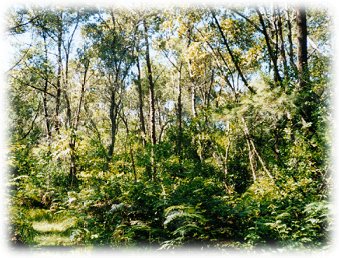Urban Bushland Report |
 |
|
Overview
The Sutherland Shire has significant areas of bushland. Most significant are those that are relatively safeguarded in national parks, including the Royal National Park, Botany Bay National Park, Towra Point Nature Reserve, Georges River National Park, Heathcote National Park and several Recreation Reserves. As well, bushland corridors still exist along the foreshores of Port Hacking, Georges River, Woronora Valley, and escarpments around Menai and Engadine. But all bushland areas are under threat from urban development. Harmful effects of urbanisation are numerous and include: over use, abuse, weeds, dumping, pollution, housing and commercial development and development for playing fields. These are incrementally reducing bushland cover, its biodiversity and its viability.
Local, state and federal governments are becoming increasingly aware of the importance of bushland to the sustainability of the environment, which supports the quality of life, and welfare of urban societies. Legislation seeks to minimise the detrimental effects of urbanisation on bushland; for example, the federal government's Environment Protection and Biodiversity Conservation Act, the state government's Native Vegetation Conservation Act and Environmental Planning and Assessment Act, and various local government development control plans. Central to much of this legislation are the fundamental principles of sustainable development accompanied by the precautionary principle.
While the intent of governments to protect bushland is enshrined in laws, government resources and expertise to implement that intent is often lacking. Urban development pressures often lead to compromises that are steadily reducing the native vegetation cover of the Shire - estimated at 8% per annum.
Through its Standing Group, the Preservation of Urban Bushland Society (PUBS), the Centre advocates:
- No compromises should be made that reduce the total bushland cover in the Shire. Removal of native vegetation from sites to be developed should be discouraged and revegetation plans be submitted together with development applications, and no development given a compliance certificate till revegetation efforts are deemed satisfactory. In the case of re-establishing canopy trees and middle-storey vegetation, this may take several years.
- All efforts should be made to increase bushland cover through increased planting of natives on private and public lands. The Centre supports activities by volunteer and government groups to educate residents on the value of favouring native vegetation gardens, especially ones that comprise local indigenous vegetation.
- Bushland corridors should be established, and where they already exist, maintained, to enable natural interactions of seed stock and movement of fauna. These corridors should be given a highly protected zoning to restrict types of development.
- Appropriate management plans, funding and resources should be provided by public authorities for the removal of noxious and nuisance weeds from bushland areas.
- Appropriate management plans, funding and resources should be provided by public authorities to encourage appropriate access to bushland and discourage access, which leads to degradation.
- Encouragement should be given to schools to foster a love of bushland and native gardens.
The Centre provides advice to community members and groups to help them in their efforts to safeguard bushland. It also has its Ministerial appointees on the National Parks and Wildlife Service Advisory Committee, on the Southern Catchment Board and Southern Sydney Catchment Board, and has an appointed representative on Sutherland Shire Council's Integrated Environment Committee. The status of native bushland in the Shire and its bioregions will be highlighted on the Centre's website by the end of 2000. |
| Top of Page |
| |
| |



